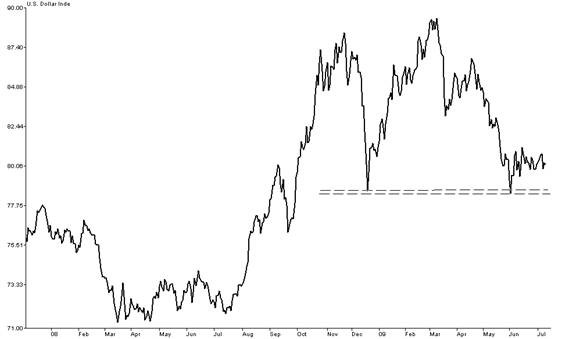Currency ETF Trade Levels to Watch For (FXA FXB) (FXA FXB FXE FXY)
Post on: 13 Июль, 2015 No Comment

The U.S. dollar index chart tells the tale for most other global currencies — as the U.S. dollar has strengthened most global currencies have weakened relative to it. Currency ETFs, reflecting the Canadian, British, European, Australian and Japanese currencies have all been in downtrends since mid-2014. Since the start of February though — and earlier in some cases — the downtrends have leveled off. If the price breaks lower it presents a shorting opportunity, while a rally above these short-term consolidations sets the stage for an uptrend to potential take hold.
CurrencyShares British Pound Sterling ETF (FXB ) has pushed above its descending trendline which extends backs to July. The British Pound isn’t out of the woods, yet is currently stronger than the exchange-traded funds (ETF) discussed below. While the descending trendline is broken, the trend remains down — the price is sill making overall lower highs and lower lows. A drop below $150.76, the Feb. 20 low, signals the downtrend could be continuing. An initial target is $147.60, just above the January low. (For more, see: Forex Tutorial: Introduction to Currency Trading .)
This rally is the largest since the decline began. Resistance is expected near $153, but if the price pushes through that it’s likely this rally is the first leg of an emerging uptrend. If that occurs, potential buying opportunities occur along the new trendline higher.
The decline in the CurrencyShares Euro ETF (FXE ) accelerated through late December and January. February has seen the price stabilize, but as of yet there are no bullish inclinations. Minor support has developed at $111; a drop below signals the lull could be over and the downtrend is resuming. The price target for the decline is $108.50. This is based on the height of this consolidation subtracted from $111. While buying is bucking the longer-term trend, a rally above $112.50 breaks a triangular pattern. and indicates a further rally to $114.75. With the trend still down, $114.75 to $115.75 presents another shorting opportunity. (For more, see: Profit From Forex with Currency ETFs .)
The Currency Shares Japanese Yen ETF (FXY ) has been in lockdown since December, moving in a choppy range after a sharp multi-month decline. A drop below $80.50 takes out all the swing lows going back to Dec. 23 and likely means more downside to come. Based on the height of this range the approximate target is $77.50. There is the possibility the price is basing , and rally above $83.87 signals an advance. The profit target for the upside breakout is $86; there is significant resistance above $86 based on very strong selling which occurred at the end of October. (For more, see: Currency ETFs Simplify Forex Trades .)

CurrencyShares Australian Dollar ETF (FXA ) is ranging in February between $78.52 and $76.88. Based on the downtrend, traders will be looking to short near short-term resistance at $78.52. If the price breaks through the level, more shorting opportunities occur at the descending trendline near $80. If the price breaks below the consolidation low at $76.88, the target is $75.25. At this point, there isn’t much to be bullish about over the longer-term, but a higher swing high and a higher swing low would provide some price evidence the trend is reversing. (For related reading, see: Finding an Alternative with Currency ETFs .)
The Bottom Line
For these currency ETFs the trend remains down. Longs should be viewed with skepticism and targets kept conservative until there is further evidence of a rally. A slowdown in the selling doesn’t necessarily mean the end of a downtrend. If the price breaks higher though, it could set the stage for higher swing highs and higher swing longs — the basis of an uptrend. Breakouts lower indicate continued declines as the downtrend continues. When trading currency ETFs be aware of the risk. Since currencies trade 24-hours a day, but ETFs only trade during stock exchange hours, these ETFs are prone to price gaps which can expose traders to bigger losses (and gains) than expected. (For related reading, see: 2015’s Most Promising ETFs . )














